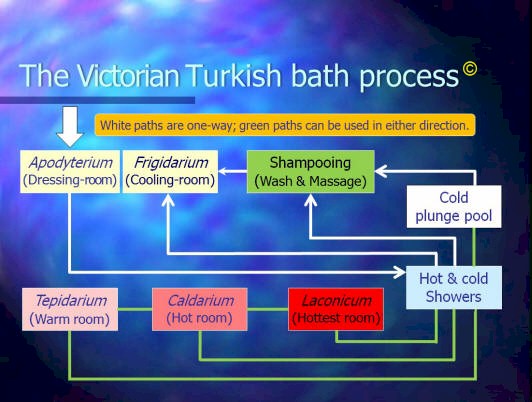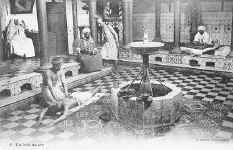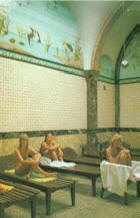1: What is a Victorian Turkish bath?


Although the Victorian Turkish bath is most certainly Victorian, its origins are not Turkish; nor is it what most of us first think of when someone mentions a bath. Indeed most people today have only a very hazy idea as to what a Turkish bath actually is.
But a Victorian habitué, or indeed habituée, in the late 1850s or '60s, would easily have recognised all the processes described in the definition I have proposed:
2. (sometimes pl.) an establishment offering Turkish baths.
It is the dryness of the air which distinguishes the Victorian Turkish bath from other related types—the vapour bath, the Russian steam bath, or the Finnish sauna (in the last of which, water is periodically ladled on to the stove, or heat source, so as to dampen an otherwise completely dry atmosphere).

The dryness of the air in the Victorian Turkish bath also, perhaps surprisingly, distinguishes it from the Turkish baths and hammams which are still to be found in Turkey today. This is treated more fully elsewhere on the website.
 It is true that in nineteenth century Turkey there were many 'Turkish baths' (or hammams) to be found; and not only in Turkey, but right across
the Maghreb
and the Middle East. Many can still be found, but their number is decreasing.
It is true that in nineteenth century Turkey there were many 'Turkish baths' (or hammams) to be found; and not only in Turkey, but right across
the Maghreb
and the Middle East. Many can still be found, but their number is decreasing.
What we shall call the Victorian Turkish bath was really a re-invention of the Roman bath, the first being constructed as recently as 1856 in Ireland, near Blarney in Co. Cork. For this reason, such baths are to this day frequently known on the (European) continent as Roman-Irish baths. Probably the most famous of these is, perhaps, the Friedrichsbad at Baden-Baden, Germany, which was built in 1869-77.
 Today, bathers at the Friedrichsbad are
normally recommended to spend just fifteen minutes in the warm room (on the left) at 136°F, followed by five minutes in a rather smaller hot room 154°F), but most bathers sensibly follow their own preferences. The Victorians, however, were much less rigorous in their pattern of usage, and there was much discussion about how long should be spent in each room, and how high the temperatures should be.
(°F
to °C table)
Today, bathers at the Friedrichsbad are
normally recommended to spend just fifteen minutes in the warm room (on the left) at 136°F, followed by five minutes in a rather smaller hot room 154°F), but most bathers sensibly follow their own preferences. The Victorians, however, were much less rigorous in their pattern of usage, and there was much discussion about how long should be spent in each room, and how high the temperatures should be.
(°F
to °C table)

